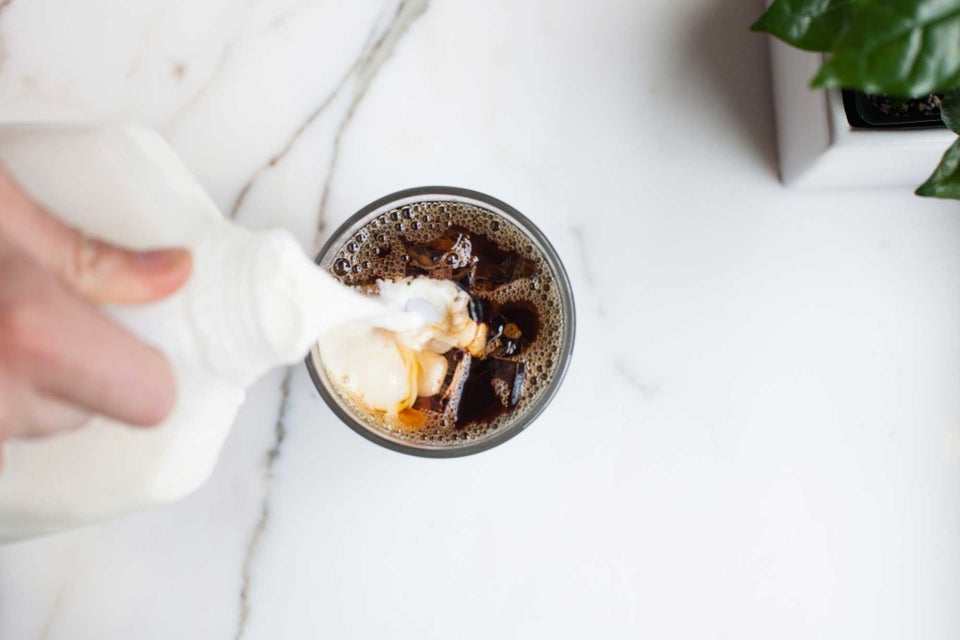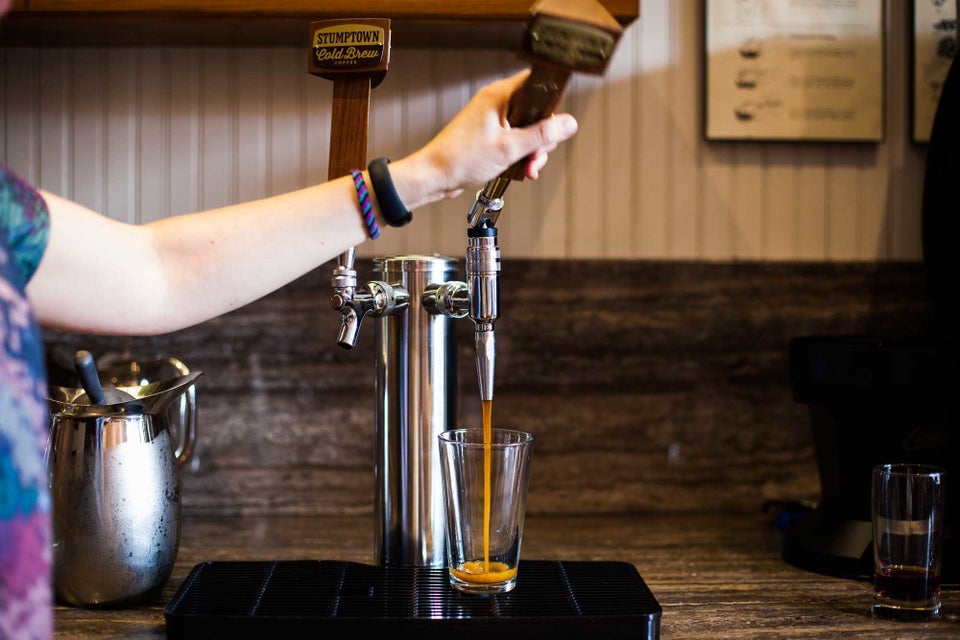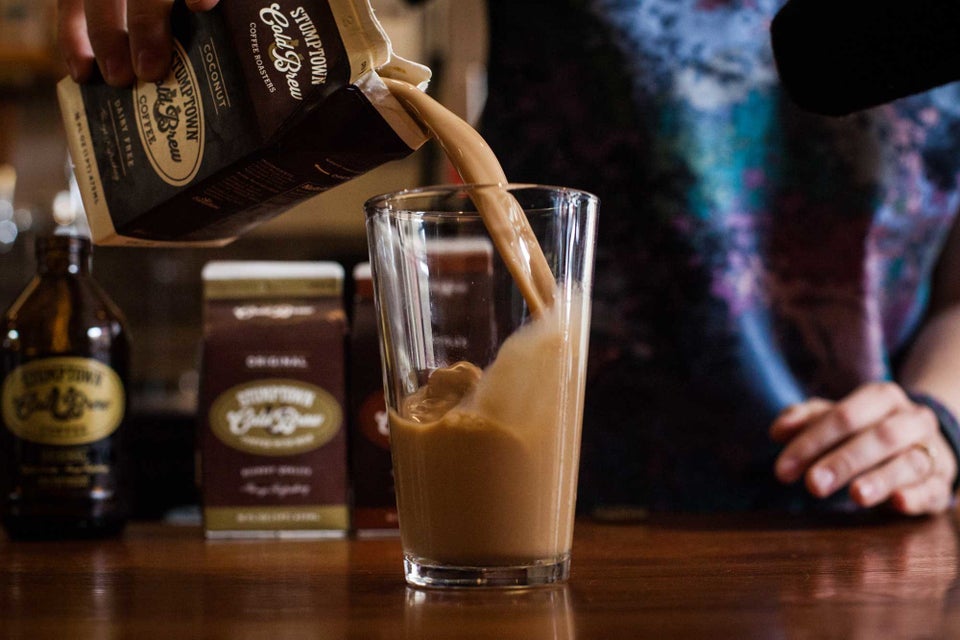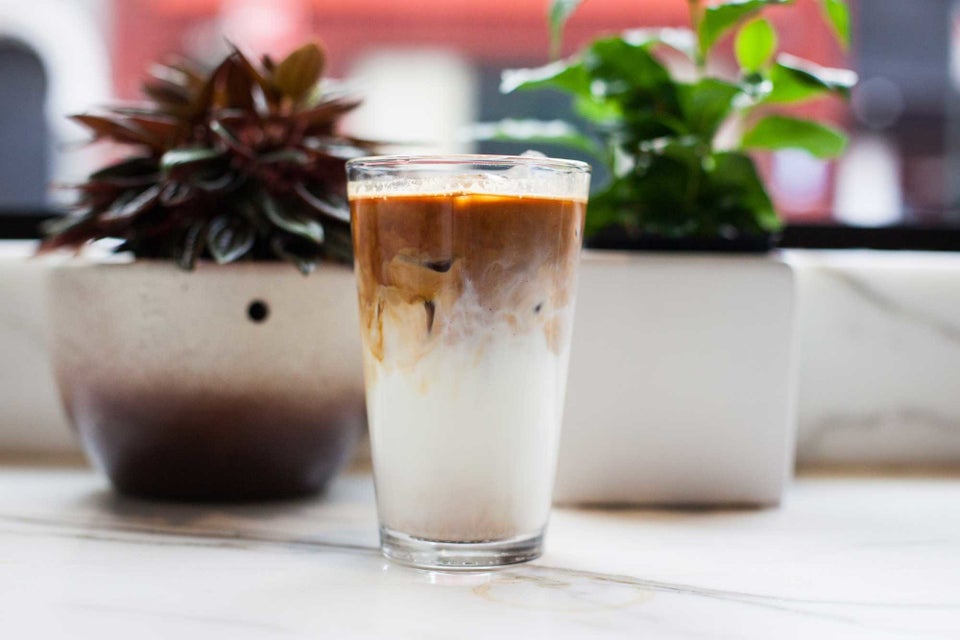It happens every year right around now. The temperature rises just a handful of degrees and the first pink blossoms begin to show their blush. A few brave souls wear sandals way too prematurely, and before you know it, every café on the block scurries to chalk up a new signboard, announcing: “IT’S ICED COFFEE SEASON!”
So it’s only natural that we’d want to talk about iced coffee. Like, really talk about iced coffee ― how to make it, how to order it, how to live it, how to breathe it. We picked the brains of some seasoned iced coffee experts in our HuffPost original audio feature. Take a listen here, then read below to find out some of what we learned (we dare you not to get thirsty):
Oliver Strand is a journalist who writes extensively about coffee, and was the author of the now defunct New York Times coffee column Ristretto. He admits that this annual transition from hot to iced coffee is a real phenomenon.
"[Iced coffee] is a part of the welcoming of the season," he explains. "I think there’s this social aspect which is really extraordinary and has developed entirely organically. That first hot day ... you’ll see. Everybody’s just jazzed for iced coffee season. For whatever reason you want to share that moment with other people, and you look at their iced coffee and they look at your iced coffee and everybody’s just kind of nodding like, 'Yeah, we have our iced coffees.'"
But not all coffee drinkers nod their heads in agreement about which kind of iced coffee is best. Any self-proclaimed coffee nerd will tell you there are numerous ways to brew iced coffee (and few of them will agree which takes top honors), but we're going to break down two basic methods for you today: Cold brew vs. ice brew.
Cold brew is made by steeping coarsely ground coffee in room-temperature water for anywhere from 12 to 24 hours, and then pouring it through a fine filter to create a concentrate that's eventually diluted with water or milk.
Ice brew isn't much different from making hot coffee. First, you brew your hot coffee using your preferred method (French press, Chemex, etc.) and then you immediately pour it over ice to shock the brewing process.
Of course, there are pros and cons to each method.
Cold brew is just about everywhere these days -- even Starbucks started making it last year. Because of its long steeping time, it does take some foresight to make at home. But because cold brew never exposes the coffee grounds to hot water, it never develops the acids that give coffee its bitter flavor. Instead, cold brew's flavor is sweet, mild and gentle on the palate, making it arguably the most drinkable option of all the iced coffees.
We say "arguably" because, of course, there is another side to this discussion.
"Some coffee nerds are very, very into cold brew," Strand says. "And other coffee nerds, it’s just the worst thing that you can do, it’s the worst way to make coffee. [They'll claim] you lose everything that’s special about coffee. So there’s actually a bit of a schism within coffee nerdom as to whether cold brew is good or bad."
So why might it bother some coffee drinkers that cold brew lacks acidity? Fat, salt and acid are three of the basic elements that make food taste delicious, so of course acid plays an important role in giving flavor to your coffee. When coffee is brewed hot and then poured over ice (which we're referring to here as "ice brew"), those acids develop in a way that the cold-brew process doesn't allow.
"There’s a lot of interesting acid compounds in coffee that are like [the acids in] wine," explains Strand. "You don’t get a lot of those compounds [with cold brew]. And that’s what coffee nerds love in their coffee. So for a coffee nerd, cold brew is a perfectly mediocre product. It’s not awful, it’s just not good and it doesn’t really respect coffee."
Then there’s a third category of iced coffee that a lot of people make at home, but we rarely discuss. That's when you just brew your hot coffee, and let it slowly chill in the refrigerator.
"Yeah, it’s a terrible idea," Strand immediately says. "It's a really bad idea."
This is because there are good acids and bad acids, and Strand explains how leaving your coffee in your refrigerator is a breeding ground for the bad ones.
"There are good acids like citric acid, which is what you find in lemons and oranges, and there is phosphoric acid which is what you find in blackberries and Coca Cola. These are great acids and they tickle your palate and they make you very happy and they make coffee tasty. Then there’s quinic acid, which appears when you brew, and that can actually develop over time. When you think of acidic coffee, like the kind they give you in the office, and it makes your stomach churn, that’s the acid that you are tasting. And when you take hot coffee and you put it in the refrigerator, you basically are turning your coffee pot into a petri dish for the development of quinic acid. So it’s very, very unpleasant."
Thirsty to learn more about iced coffee? We also talked to the experts at Stumptown Coffee Roasters, who specialize in cold brew. Listen to our full audio feature above, or download it on your favorite podcast app.
For a behind-the-scenes look at Stumptown Coffee Roasters, check out the gorgeous photos below. Now go grab yourself an iced coffee.








